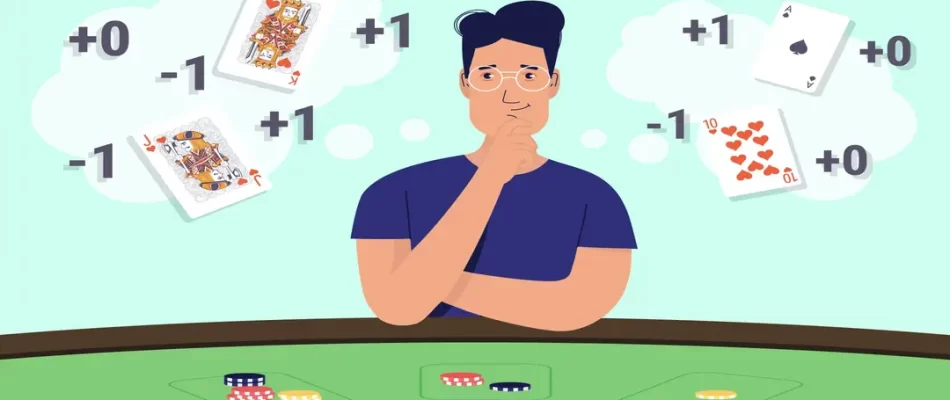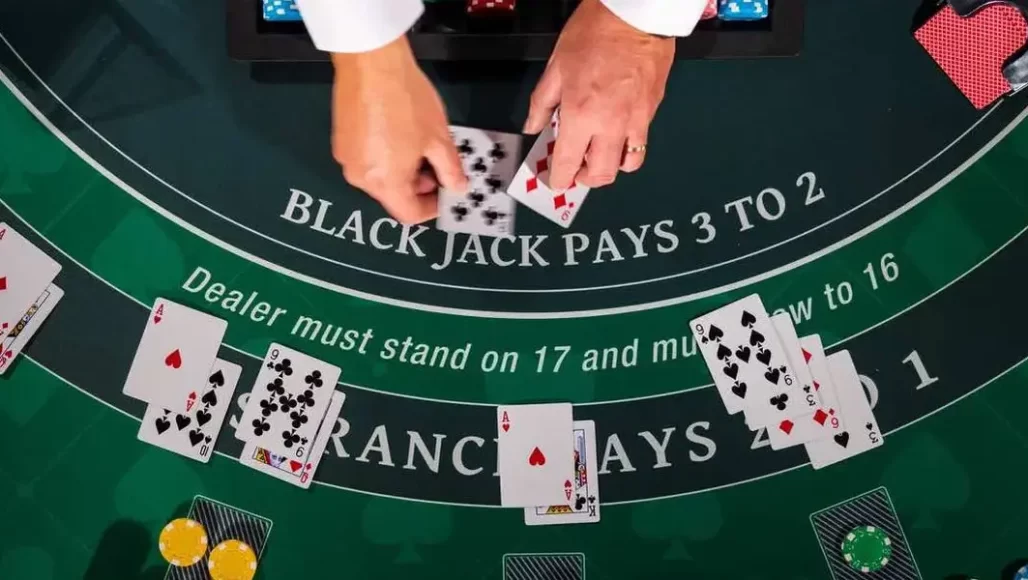Card Counting in Poker: Can It Be Done?

Card counting has long been associated with blackjack, where savvy players can tilt the odds in their favor by keeping track of which cards have been played. But what about poker? Can you count cards in poker? The answer isn’t as straightforward as it may seem. While card counting is a proven method in blackjack, and has its place in certain slot machines, applying it to poker requires a different understanding of the game’s dynamics.
In this review, we’ll explore the principles of card counting poker, whether it’s effective, and how players can use similar techniques to enhance their poker strategy. We’ll break down the mechanics, delve into the numbers, and see if it’s really worth the effort to learn how to count cards in poker.
What is Card Counting?
At its core, card counting is a strategy that involves keeping track of high and low cards dealt from the deck. In blackjack, this method helps players predict when the deck is favorable for higher bets. The system works well because blackjack deals all the cards from a single deck (or shoe), giving a player a clear picture of what cards remain.
Poker, on the other hand, is a game of incomplete information. Cards are not revealed to everyone at the table, and players only see a limited number of cards in a hand—both their own and those shared in community card games like Texas Hold’em or Dead Man’s Hand Poker.
So, can you count cards in poker like in blackjack? Technically, yes, but it’s far more complex and less reliable.
How to Count Cards in Poker
While the classic method of card counting in blackjack won’t work seamlessly in poker, there are still ways to use a similar concept to gain an edge. Instead of keeping track of every card played, poker players can count “outs” and assess the odds of certain hands developing based on the remaining cards.
Here’s how it works:
- Track Your Outs: Outs refer to the number of cards left in the deck that will improve your hand. For example, if you’re holding four cards to a flush in Texas Hold’em, there are nine cards (the remaining suited cards) that could complete your flush. Tracking these outs gives you a better understanding of whether to bet, check, or fold.
- Monitor Community Cards: In games like Texas Hold’em and Omaha, community cards give you valuable information about what’s left in the deck. By keeping track of what cards are on the table and in your hand, you can assess the likelihood of other players holding better hands.
- Pay Attention to Player Behavior: Unlike blackjack, poker involves a significant psychological component. Players often reveal information through betting patterns, slang, timing, and body language. While this isn’t card counting in the traditional sense, combining a rudimentary form of card counting with behavioral analysis can improve your strategic decisions.
In fact, this form of “counting” is often more important than simply trying to track cards, which is a more passive activity. Understanding how to count cards in poker relies heavily on understanding your opponents as much as the game itself.
Poker vs. Blackjack: A Numbers Game

Poker vs. Blackjack – why card counting poker is less effective than in blackjack, it’s essential to look at the numbers. In blackjack, a player typically competes against the house, which must follow specific rules when drawing cards. This creates a predictable pattern that card counters exploit.
In poker, the scenario is quite different. There are up to 10 players at a table, and they make independent decisions based on incomplete information. Each player’s hidden cards, or “hole cards,” add an element of uncertainty that complicates card counting.
Consider the following breakdown:
| Game | Players | Deck Composition | Predictability |
|---|---|---|---|
| Blackjack | 1-7 | Full deck (52 cards) | High |
| Texas Hold’em | 2-10 | Community + Hole Cards | Low |
| Omaha | 2-10 | Community + Hole Cards | Very Low |
As the table shows, poker offers far more variables, making it difficult to predict which cards remain in the deck with any certainty. For instance, a Texas Hold’em table with 10 players will distribute 20 cards between them before any community cards are revealed. Attempting to track these unseen cards requires much more than a mathematical approach; it also involves player psychology, betting dynamics, and game theory.
The Odds and Percentages
When it comes to poker, most players rely on odds rather than pure card counting. These odds help players decide how to proceed with their hand based on the probability of improving. For example, if you have a flush draw after the flop, the chance of completing your flush by the river is approximately 35%. This is based on the fact that 9 out of the 47 unseen cards will give you the flush.
Poker is also a game of percentages, especially when it comes to winning odds. Using some basic math, players can calculate the likelihood of hitting certain hands based on the cards they’ve already seen. This can be visualized in the following table:
| Hand | Probability |
|---|---|
| Hitting a pair on the flop (with unpaired hole cards) | ~32.4% |
| Flopping a flush (with suited hole cards) | ~0.8% |
| Completing a flush by the river (after a flush draw) | ~35% |
As you can see, poker players often rely on these percentages to inform their betting strategy rather than trying to count every card in the deck.
Why Card Counting in Poker is Impractical

One of the primary reasons card counting poker doesn’t offer the same advantages as in blackjack is the lack of available information. In blackjack, all the cards dealt are visible to the players, which makes tracking them a straightforward task. However, in poker, not only are some cards hidden (your opponents’ hole cards), but the number of players and variations in game style make predicting the remaining cards almost impossible.
Additionally, the number of cards in play at a poker table is significantly reduced compared to blackjack. With fewer cards dealt face-up and more reliance on hidden information, traditional card counting becomes nearly useless.
Conclusion: Can You Count Cards in Poker?
The question remains: can you count cards in poker? While the short answer is yes, the long answer is that it’s not as effective as many players might hope. Unlike blackjack, where card counting can shift the odds in your favor, poker requires a more nuanced understanding of the game, the players, and the probabilities at play.
Rather than focusing on traditional card counting, poker players should concentrate on learning the odds, tracking their outs, and observing their opponents’ behavior. Combining these techniques with solid betting strategy is far more effective than attempting to count every card on the table.
If you’re looking to up your game, learning how to count cards in poker might offer marginal benefits, but it won’t replace the need for deep strategy and psychological insight. The game of poker is as much about reading people as it is about reading the cards.
By focusing on probability and player tendencies, you’ll have a far better chance of improving your performance at the table than relying on card counting alone.
FAQ
While you can attempt to track cards in poker, it’s not as straightforward or effective as it is in blackjack. Poker involves hidden cards and multiple players, which make traditional card counting nearly impossible. Instead, players focus on tracking outs and calculating odds.
In poker, players count “outs” rather than individual cards. Outs refer to the cards left in the deck that could improve your hand. For example, if you have a flush draw, you would track the number of cards left that could complete your flush (usually 9).
Card counting is not illegal in poker or any other game. However, in a casino setting, some venues might frown upon card counting in games like blackjack. In poker, counting cards has little impact due to the hidden nature of the game.
Card counting offers a much smaller advantage in poker compared to blackjack. Because poker is a game of incomplete information and psychology, traditional card counting techniques are not particularly useful. Understanding player behavior and calculating hand odds provides a better edge.
In blackjack, players track cards to predict the likelihood of certain outcomes, like getting a favorable hand. In poker, card counting is more about estimating outs and odds. Poker involves more players, hidden cards, and strategic bluffing, making traditional card counting less effective.
No, there is no dedicated card counting system for poker, as there is for blackjack. Instead, poker players use methods like tracking outs, calculating odds, and assessing player behavior to make better decisions.
No, relying solely on card counting in poker won’t significantly improve your game. It’s better to focus on learning poker strategy, including hand selection, betting patterns, and understanding the odds of hitting certain hands. These skills are far more valuable than traditional card counting.
Odds in poker refer to the likelihood of completing a certain hand, such as making a flush or straight. Outs are the number of cards left in the deck that could improve your hand. By combining outs with the odds, players make informed decisions about when to bet, fold, or call.